|
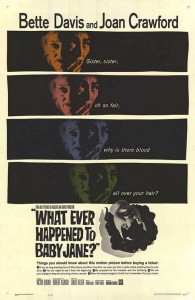
Synopsis:
Aging former child star “Baby Jane” (Bette Davis) resents having to care for her invalid sister, Blanche (Joan Crawford). When she meets a pianist (Victor Buono) who promises to help her revive her career, she makes plans to get rid of Blanche — once and for all.
|
|
Genres, Themes, Actors, and Directors:
- Actors and Actresses
- Anna Lee Films
- Bette Davis Films
- Disabilities
- Has-Beens
- Jealousy
- Joan Crawford Films
- Mental Illness
- Psychological Horror
- Robert Aldrich Films
- Siblings
Response to Peary’s Review:
As Peary notes, this “scary, perverse character study” — a “Grand Guignol… of personality-disorder horror films” — is too well made on too many counts to be considered a true camp classic (though it’s certainly enjoyed by many on that level as well). It features stellar performances by all those involved (especially Davis and her “business partner”, the inimitable Victor Buono); beautiful black-and-white cinematography; appropriately creepy sets; and a storyline which manages to elicit both genuine fright and concern for its protagonists.
There are countless memorable moments in Baby Jane: Jane taunting Blanche by serving her a dead canary — and later a dead rat — for dinner; Jane coyly asking a young man behind the counter at the newspaper office if he recognizes her; Jane taking delight in building sandcastles on the beach; all of Jane’s interactions with Buono (whose use of subtle facial twitches is truly hilarious). Perhaps most interesting, however, is the fact that while director Robert Aldrich appears to be ridiculing his stars — they’re looking their absolute worst here — he also manages to generate genuine sympathy for their plights. Crawford and Davis may have been the unfortunate inspiration for, as Peary puts it, “a whole slew of fright films in which humor came from looking at grotesquely made-up faces of [once beautiful] old women”; but in this film, they’re the real deal: broken, tragic women whose jealousy and vanity have forced them both onto an inescapably disastrous trajectory.
Note: In his review, Peary points out the many similarities between What Ever Happened to Baby Jane? and Billy Wilder’s Sunset Boulevard; take note especially of the final scene on the beach.
Redeeming Qualities and Moments:
- Bette Davis’s Oscar-nominated performance (one of her finest) as the delusional “Baby Jane”
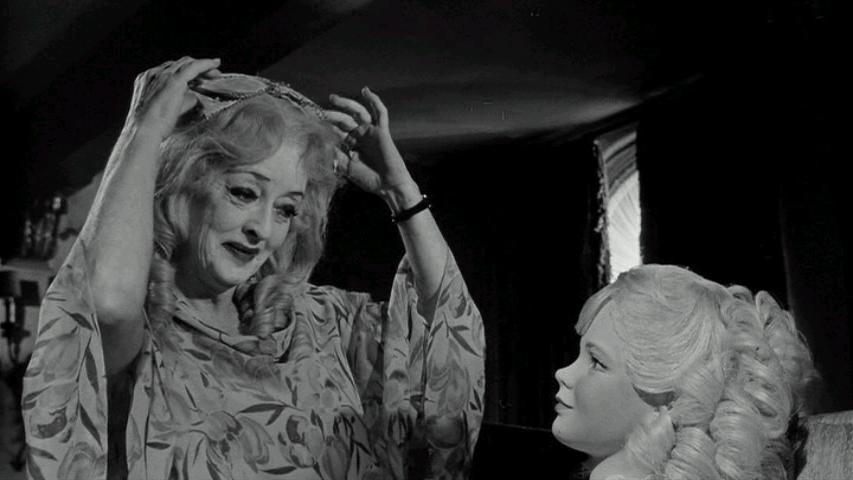
- Crawford’s less dramatic, but equally impressive, performance as the wheelchair-bound Blanche

- Many delightfully sinister moments between Davis and Crawford (notorious rivals in real life as well)
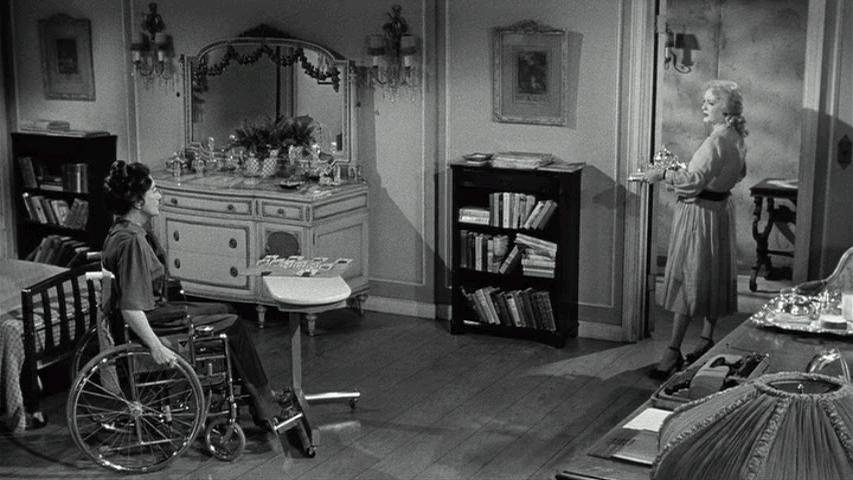
- Victor Buono’s wonderfully comedic turn as Edwin, Jane’s would-be salvation

- Maidie Norman as Blanche’s concerned housemaid
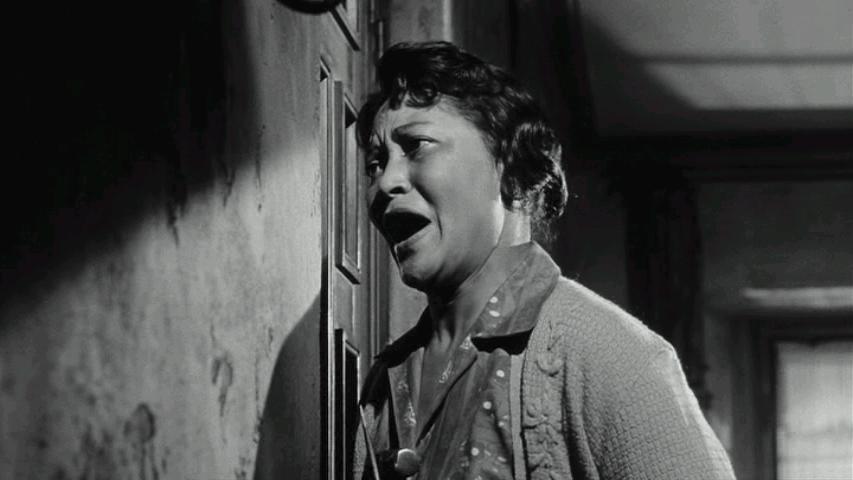
- Many moments of genuine terror — as when Blanche cries out for help by tossing a crumpled piece of paper down to their neighbor, only to watch Jane picking it up instead
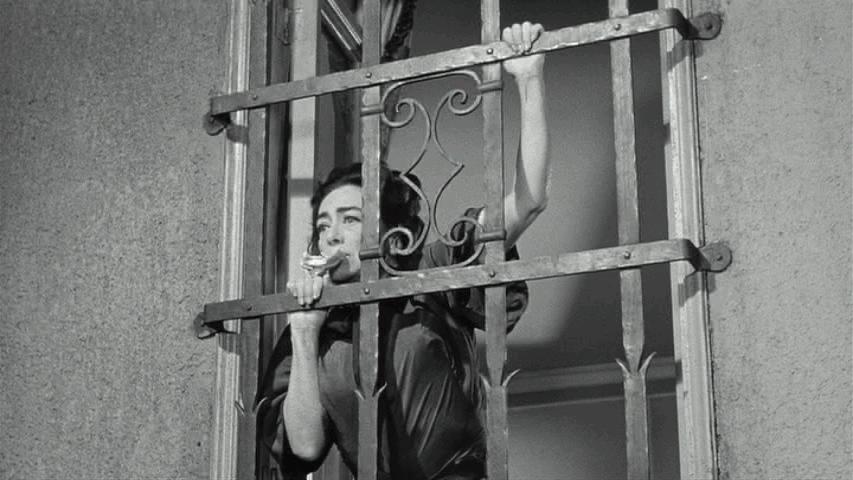
- Appropriately baroque set designs

- An effectively creepy musical score
Must See?
Definitely. In addition to featuring Oscar-nominated performances by both Davis and Buono, this infamous camp classic inspired (for better or for worse) a spate of similarly-themed “aging hag” films, and thus holds a special place in cinematic history.
Categories
- Cult Movie
- Historically Relevant
- Noteworthy Performance(s)
- Oscar Winner or Nominee
(Listed in 1001 Movies You Must See Before You Die)
Links:
|








One thought on “What Ever Happened to Baby Jane? (1962)”
‘Baby Jane’ is at least in the top 50 of must-sees! This is one of those iconic pictures that no film fanatic needs to read up on first; I could go on and on about it, but it speaks volumes for itself.
A few points, though…
From what I’ve read, director Aldrich was something of a pussycat. I wouldn’t be inclined to think he was ridiculing Crawford and Davis (who designed her own make-up, apparently). The one Aldrich remark I recall about the two of them: “It was like directing two Sherman tanks.”
Much has been written about the rivalry between C&D but stories of how that played out tend to include the word ‘reportedly’. In print, both women tended to downplay the cat-fight aspect. (It’s interesting that Davis often doesn’t look directly at Crawford in the film. Is that her character’s behavior?) Since details of the ‘feud’ are so murky, one wonders why no one involved thought to write a ‘making of’ memoir.
Having seen ‘BJ’ many times, I’ve come to find the opening backstory sequences cumbersome. Since the film really takes off with the accident -and we don’t see their faces – I’d love to see it start just before that. There could easily have been a short set-up with Blanche and Jane (faces still unseen) at the party they return from, with guests at the party making comments that would fill in backstory. Of course there’s the little matter of the ‘I’ve Written a Letter to Daddy’ number, but…dream sequence, anyone?
My favorite moment is during the dialogue captured amusingly at IMDb:
Blanche: You wouldn’t be able to do these awful things to me if I weren’t still in this chair.
Jane: But cha AAH, Blanche! Ya AAH in that chair!
…Of course, it’s a treasured camp moment but what I love about it is watching Davis’ eyes. Until Blanche says that line, Jane is obviously beginning to feel some sort of guilt. After the line, that feeling disappears as Jane rolls her eyes.
Second favorite moment: Jane, upstairs, looks down to see Edwin flying in from the kitchen in a wheelchair, holding the Baby Jane doll – and it scares the bejesus out of her.
The scenes between Edwin and his mother Dehlia are esp. entertaining. Speaking of that – in one quick shot, Davis looks out the window and her real-life, bitter-memoir-author daughter, B.D., is looking up at her. Now, THAT’S spooky.
Last note: a musical version was written and performed regionally. What Ever Happened to That???